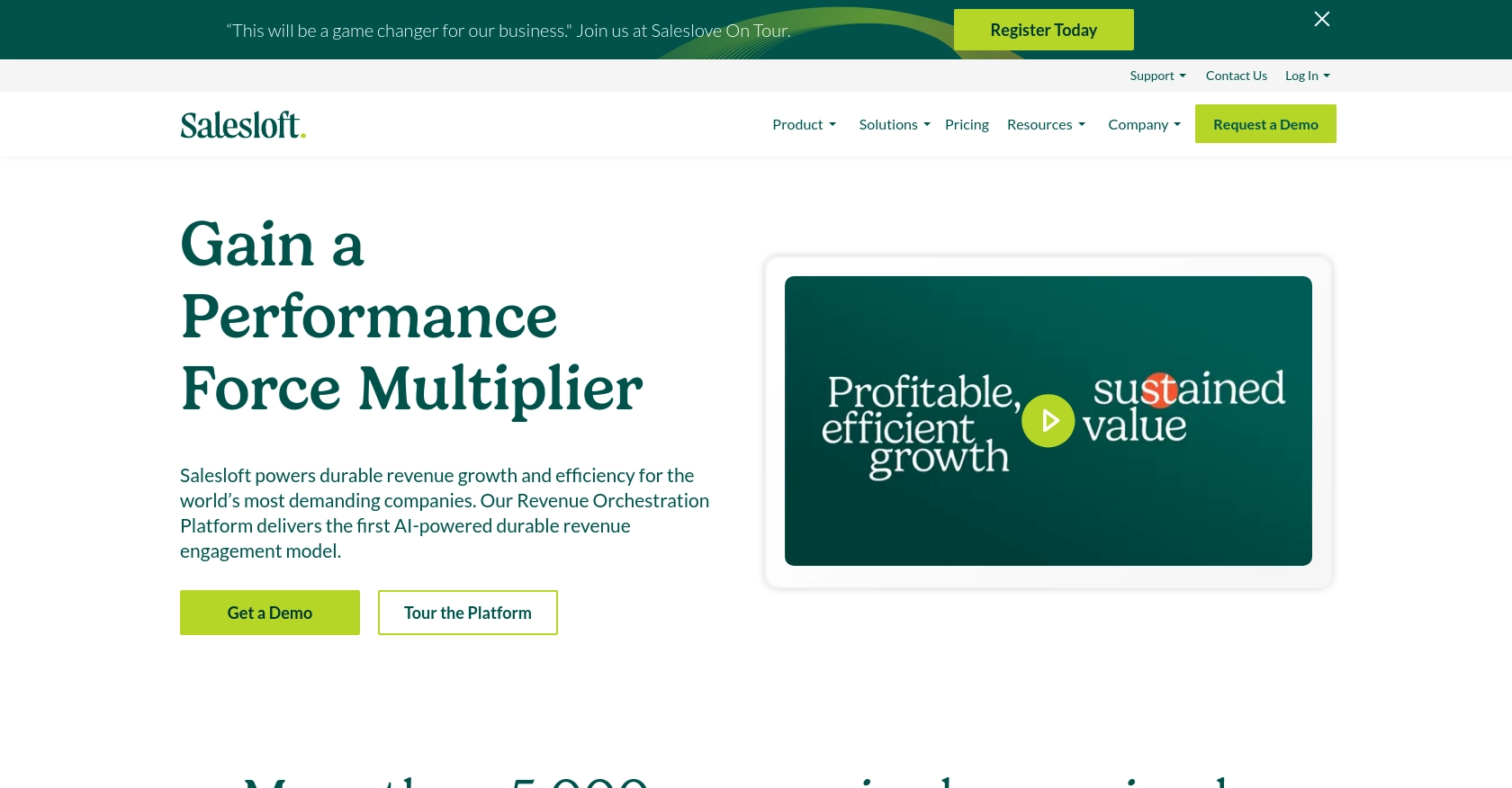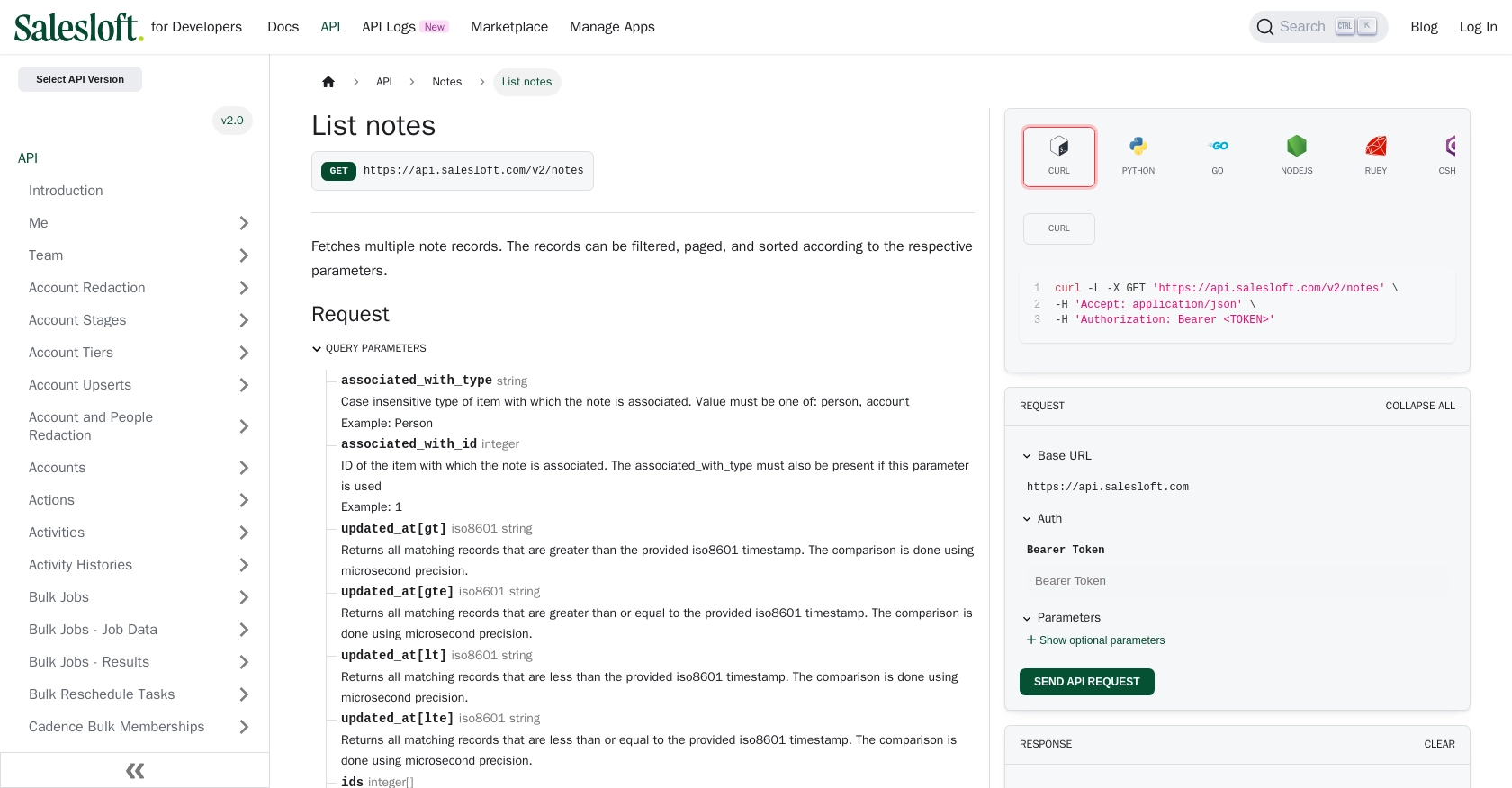How to Get Notes with the Salesloft API in PHP

Introduction to Salesloft API Integration
Salesloft is a powerful sales engagement platform designed to enhance the efficiency and effectiveness of sales teams. It offers a suite of tools that streamline communication, automate workflows, and provide valuable insights into sales processes.
Integrating with the Salesloft API allows developers to access and manage sales data programmatically. For example, retrieving notes associated with sales activities can help in analyzing customer interactions and improving sales strategies. This article will guide you through the process of using PHP to interact with the Salesloft API to fetch notes, enabling you to leverage this data for enhanced sales performance.
Setting Up Your Salesloft Test Account for API Integration
Before you can start interacting with the Salesloft API using PHP, you need to set up a test or sandbox account. This will allow you to safely experiment with API calls without affecting live data. Follow these steps to get started:
Create a Salesloft Account
- Visit the Salesloft website and sign up for a free trial or demo account if you don't already have one.
- Follow the on-screen instructions to complete the registration process and log in to your account.
Generate OAuth Credentials for Salesloft API
Salesloft uses OAuth 2.0 for authentication, which requires you to create an OAuth app to obtain the necessary credentials.
- Navigate to Your Applications in your Salesloft account settings.
- Select OAuth Applications and click on Create New.
- Fill out the required fields and click Save.
- After saving, you will receive your Client ID and Client Secret. Make sure to store these securely as you will need them for authorization.
Authorize Your Application
To obtain an access token, you need to authorize your application:
- Construct the authorization URL by replacing
YOUR_CLIENT_IDandYOUR_REDIRECT_URIwith your app's details: - Visit the URL in your browser and authorize the application when prompted.
- Upon authorization, you will be redirected to your specified redirect URI with a
codeparameter in the URL.
https://accounts.salesloft.com/oauth/authorize?client_id=YOUR_CLIENT_ID&redirect_uri=YOUR_REDIRECT_URI&response_type=code
Obtain Access and Refresh Tokens
Use the authorization code to request access and refresh tokens:
POST https://accounts.salesloft.com/oauth/token
{
"client_id": "YOUR_CLIENT_ID",
"client_secret": "YOUR_CLIENT_SECRET",
"code": "AUTHORIZATION_CODE",
"grant_type": "authorization_code",
"redirect_uri": "YOUR_REDIRECT_URI"
}
Store the access_token and refresh_token from the response securely. These tokens will be used to authenticate your API requests.
With your Salesloft account and OAuth credentials set up, you're now ready to start making API calls to fetch notes using PHP.

sbb-itb-96038d7
Making API Calls to Fetch Notes from Salesloft Using PHP
Prerequisites for PHP and Salesloft API Integration
Before you begin, ensure you have the following installed on your system:
- PHP 7.4 or higher
- Composer for dependency management
You'll also need to install the guzzlehttp/guzzle package to handle HTTP requests. Run the following command in your terminal:
composer require guzzlehttp/guzzle
Fetching Notes from Salesloft API with PHP
To retrieve notes from Salesloft, you'll make a GET request to the Salesloft API endpoint. Follow these steps to set up your PHP script:
- Create a new PHP file named
get_salesloft_notes.php. - Add the following code to the file:
request('GET', 'https://api.salesloft.com/v2/notes', [
'headers' => [
'Authorization' => 'Bearer ' . $accessToken,
'Accept' => 'application/json',
],
'query' => [
'per_page' => 10,
'page' => 1,
]
]);
if ($response->getStatusCode() === 200) {
$notes = json_decode($response->getBody(), true);
foreach ($notes['data'] as $note) {
echo "Note ID: " . $note['id'] . "\n";
echo "Content: " . $note['content'] . "\n";
echo "Created At: " . $note['created_at'] . "\n";
echo "Updated At: " . $note['updated_at'] . "\n\n";
}
} else {
echo "Failed to fetch notes. Status Code: " . $response->getStatusCode();
}
?>
Replace YOUR_ACCESS_TOKEN with the access token you obtained during the OAuth setup.
Running the PHP Script to Retrieve Salesloft Notes
Execute the script from the command line using the following command:
php get_salesloft_notes.php
If successful, the script will output the notes retrieved from Salesloft. You can verify the data by checking the Salesloft dashboard to ensure the notes match.
Handling Errors and Response Codes
Salesloft API may return various HTTP status codes to indicate the success or failure of your request. Here are some common codes:
- 200 OK: The request was successful.
- 401 Unauthorized: The access token is invalid or expired.
- 403 Forbidden: You do not have permission to access the resource.
- 404 Not Found: The requested resource does not exist.
Ensure you handle these errors gracefully in your application to provide a better user experience.
For more detailed information on error handling, refer to the Salesloft API documentation.

Conclusion and Best Practices for Salesloft API Integration with PHP
Integrating with the Salesloft API using PHP provides a powerful way to access and manage sales data, enhancing your ability to analyze customer interactions and improve sales strategies. By following the steps outlined in this guide, you can efficiently retrieve notes and leverage this data for better decision-making.
Best Practices for Secure and Efficient Salesloft API Usage
- Securely Store Credentials: Always store your OAuth credentials, including the client ID, client secret, access token, and refresh token, securely. Consider using environment variables or a secure vault to keep these sensitive details safe.
- Handle Rate Limits: Be mindful of Salesloft's rate limits, which are set at 600 cost per minute. Implement logic to handle rate limit responses and retry requests if necessary. For more details, refer to the Salesloft API rate limits documentation.
- Implement Error Handling: Gracefully handle errors by checking HTTP status codes and providing informative messages to users. This will improve the user experience and help in debugging issues.
- Optimize Data Handling: Use filtering, paging, and sorting options to efficiently retrieve only the data you need. This will reduce the load on both your application and the Salesloft API.
Enhance Your Integration Strategy with Endgrate
While integrating with Salesloft is a valuable step, managing multiple integrations can be complex and time-consuming. Endgrate offers a streamlined solution by providing a single API endpoint that connects to multiple platforms, including Salesloft. This allows you to focus on your core product while outsourcing integration management.
With Endgrate, you can build once for each use case and enjoy an intuitive integration experience for your customers. Visit Endgrate to learn more about how you can simplify your integration strategy and enhance your product's capabilities.
Read More
- https://endgrate.com/provider/salesloft
- https://developers.salesloft.com/docs/platform/api-basics/oauth-authentication/
- https://developers.salesloft.com/docs/platform/api-basics/request-response-format/
- https://developers.salesloft.com/docs/platform/api-basics/filtering-paging-sorting/
- https://developers.salesloft.com/docs/platform/api-basics/rate-limits/
- https://developers.salesloft.com/docs/api/notes-index/
Ready to get started?
